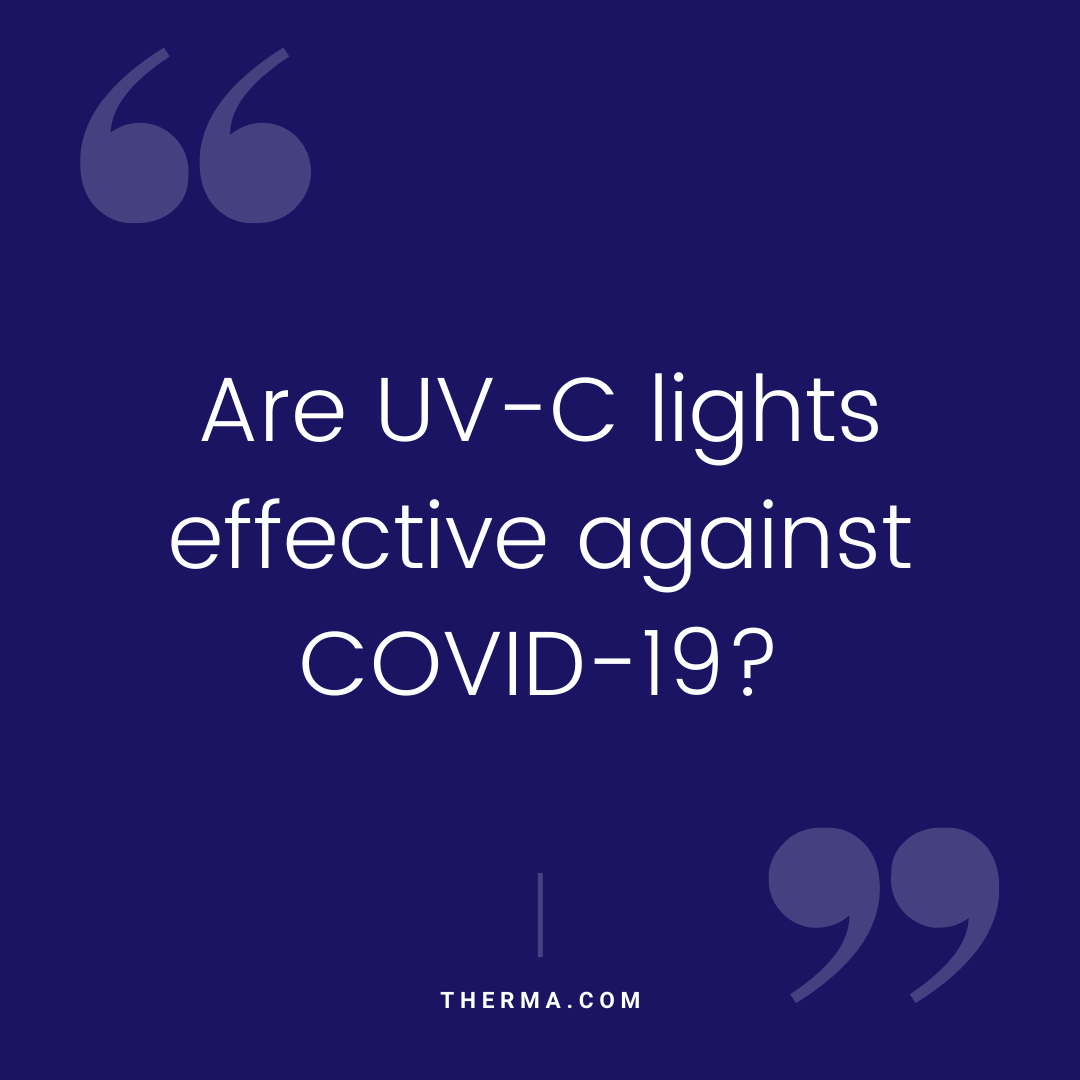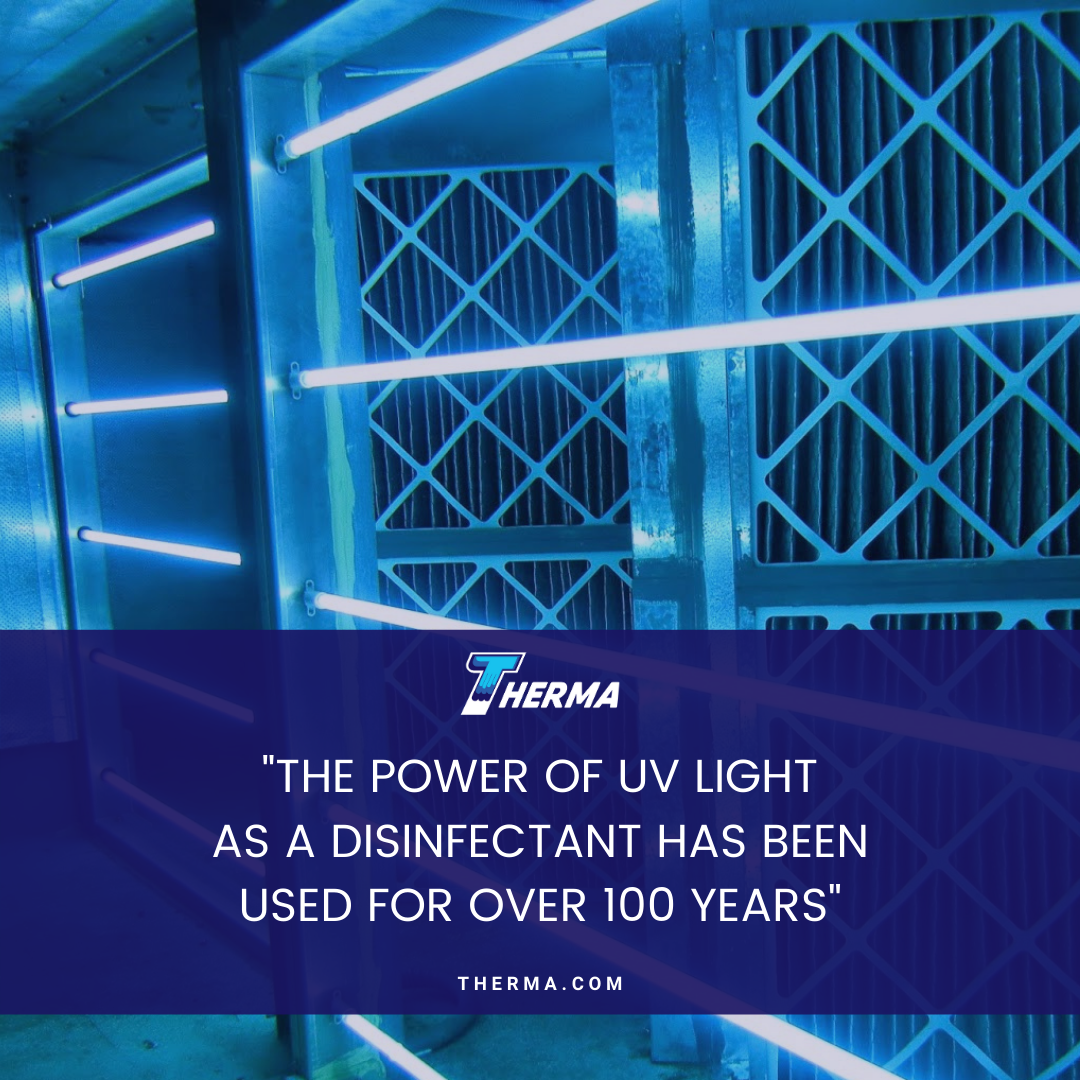Ultraviolet C (UVC or UV-C) light is an established and effective means to neutralize bacteria and viruses in air, water and on non-porous surfaces. With COVID-19, many managers and owners are wondering if current UV-C options for HVAC systems can help them protect occupants.
A Little About UVC
The power of UV light as a disinfectant has been used for over 100 years. UV light is divided into three wavebands. UV-C, the band of UV light with wavelengths ranging from 200 to 280 nm, is most effective at destroying genetic material in bacteria, fungi and viruses. By damaging the genetic material, UV-C inhibits an organism’s ability to reproduce. It is also known as ultraviolet germicidal irradiation (UVGI).
Modern applications span multiple industries and include:
- Medical facilities to disinfect surfaces in unoccupied rooms,
- Municipal water treatment facilities as part of the sterilization process,
- HVAC systems to maintain efficiency and indoor air quality by keeping dust, microorganisms, viruses and fungi from building up on coils and in the ductwork.
The effectiveness of UV-C depends on the wavelength of the light emitted, the medium containing the organism, and the duration of the exposure.
UVC in the Pandemic
Many building owners and managers face serious hurdles in protecting occupants from COVID-19 while maintaining their economic role. The SARS-CoV-2 novel coronavirus that causes COVID-19 has generated renewed interest in UV-C. A common question is, are UV-C lights effective against COVID-19. The short answer from many organizations is maybe.
The FDA, which regulates UV-C lamps, and the International Ultraviolet Association (IUVA) point out that UV-C is effective against other coronaviruses, including two that are very similar to SARS-CoV-2. This new virus is similar enough to other coronaviruses that researchers expect that UV-C will inactivate it as well.
However, full inactivation depends on the dose, whether or not the virus undergoes direct exposure and the duration of exposure. Not all lamps are the same, with some emitting wavelengths outside of those suggested for disinfection of specific viruses. Contaminants such as dust, dirt and bodily fluids reduce effectiveness by shielding the organism. Lamps need to shine directly on contaminated surfaces for specific lengths of time, and air and water would need to flow within a range of calculated velocities to ensure the exposure lasts long enough to damage the virus carried within it.
These factors are hard to control well enough to make UV-C lamps the primary method of disinfection. However, UV-C is recommended by several organizations as part of a multi-tier disinfection plan, especially when focused on disinfecting air.
ASHRAE recommends that owners and facilities managers use HVAC systems to lower the airborne concentration of SARS-CoV-2. This includes increasing the flow of outdoor air through the ventilation, additional safety precautions when performing maintenance or replacing filters to keep equipment from becoming contaminated, and including UV-C systems as an option for air cleaning through HVAC ductwork or In-Room devices.
The IUVA’s position is that UV-C may be beneficial “in a multiple barrier approach” based on its effectiveness against other similar coronaviruses, specifically within the 200-280 nm range and with the right dosage. UV-C is not to replace other recommended disinfection methods, but is used as an additional layer of protection.
The Illuminating Engineering Society (IES) Photobiology Committee suggests UV-C lights supplement other disinfection methods. Air disinfection, specifically via upper-room UV-C lighting, is considered more effective than surface disinfection, but in-duct systems may also provide some benefit.
UVC Safety
UV-C is powerful and effective. It is also dangerous. Exposure to UV-C can damage the eyes and skin. It should not be used directly on individuals. Unless expressly designed and installed properly, most UV-C systems are not to be used in occupied spaces.
Facility managers and building owners should also take steps to protect the maintenance staff. Train personnel on the effects of UV-C light. Include electrical disconnect devices on access points so that systems are de-energized when staff access UV-C systems. Finally, enforce appropriate PPE requirements for any work that requires energized lamps.
Replacement schedules and disposal of UV-C lamps are the same as for fluorescent bulbs. Many types of lamps use mercury, which is extremely hazardous. PTFE encapsulated lamps keep broken glass and mercury within the protective film that covers the lamp.
While UV-C lighting is not a panacea for COVID-19, it can provide an additional layer of disinfection for facilities. Properly installed lamps with regular maintenance protect occupants and offer peace of mind.









